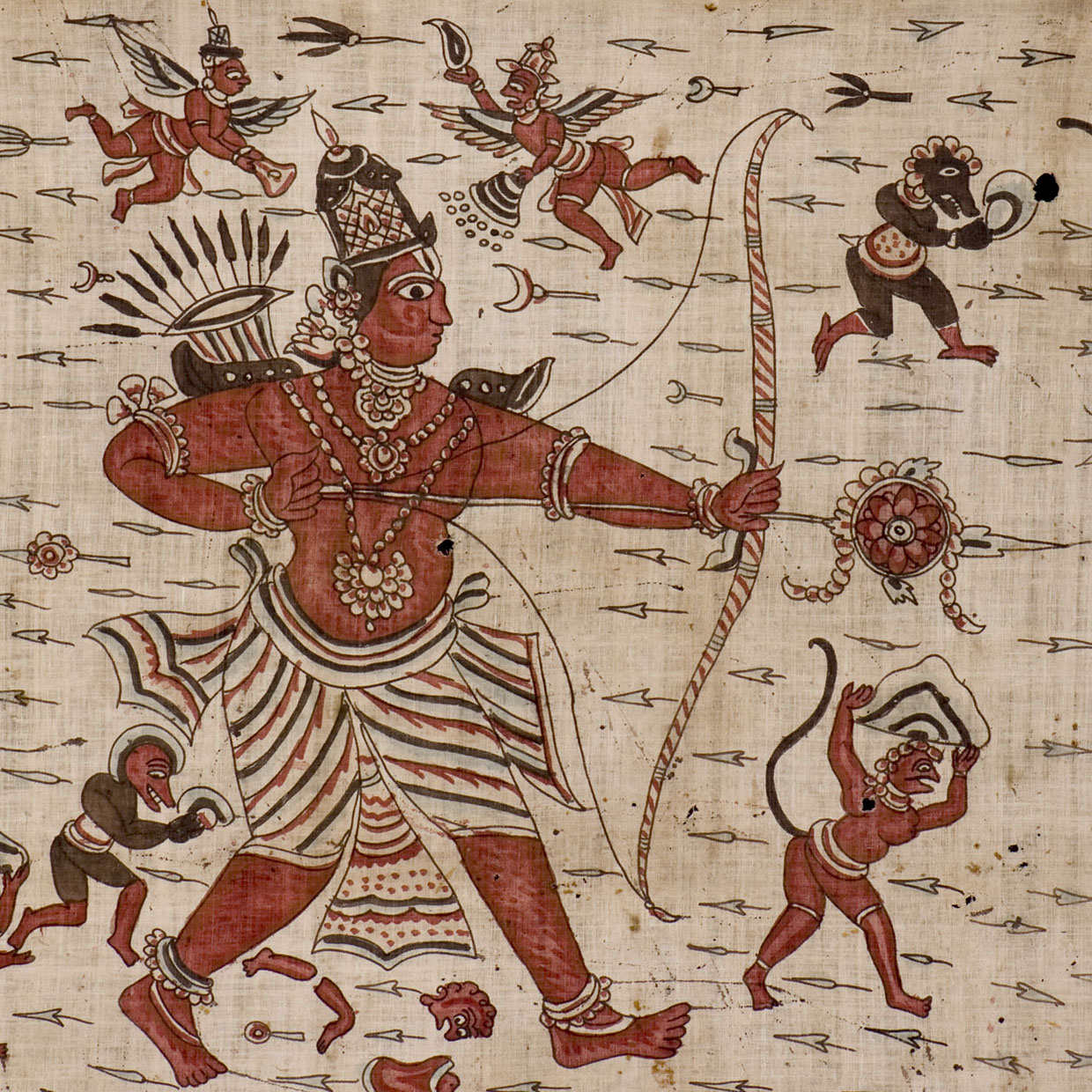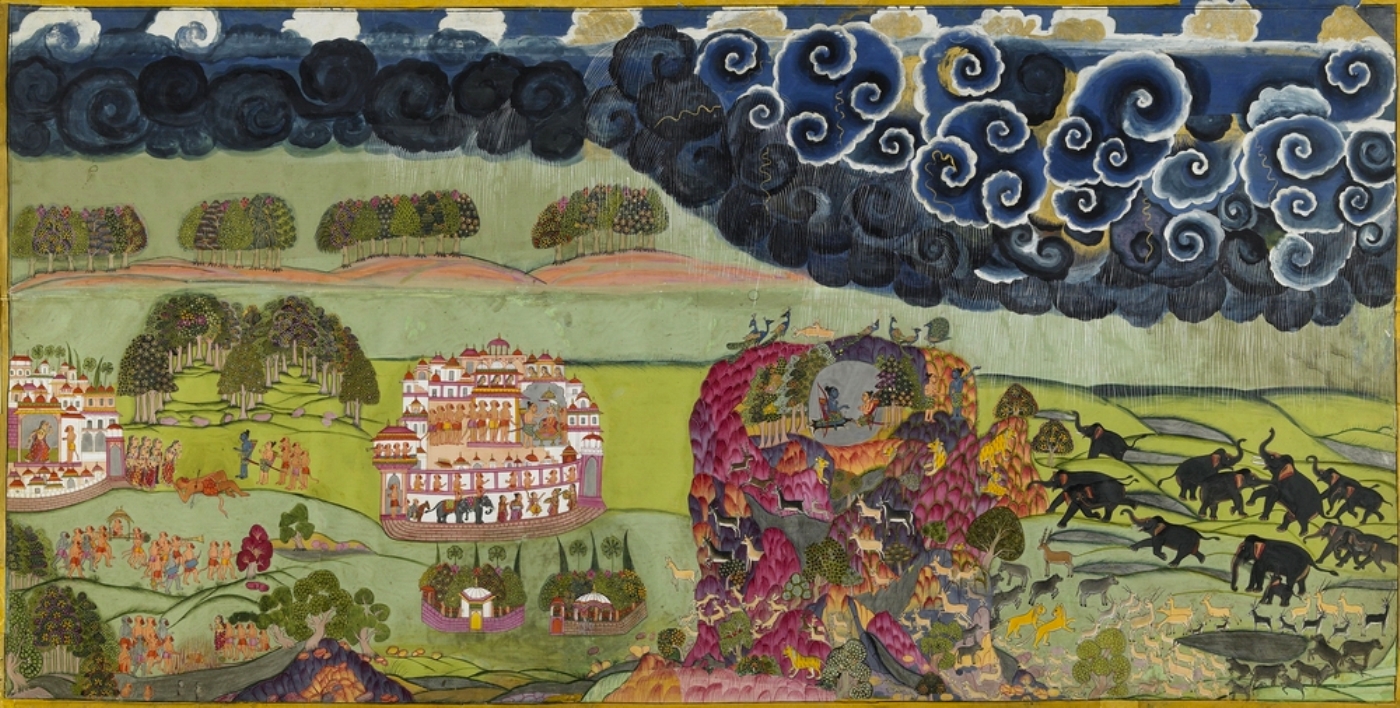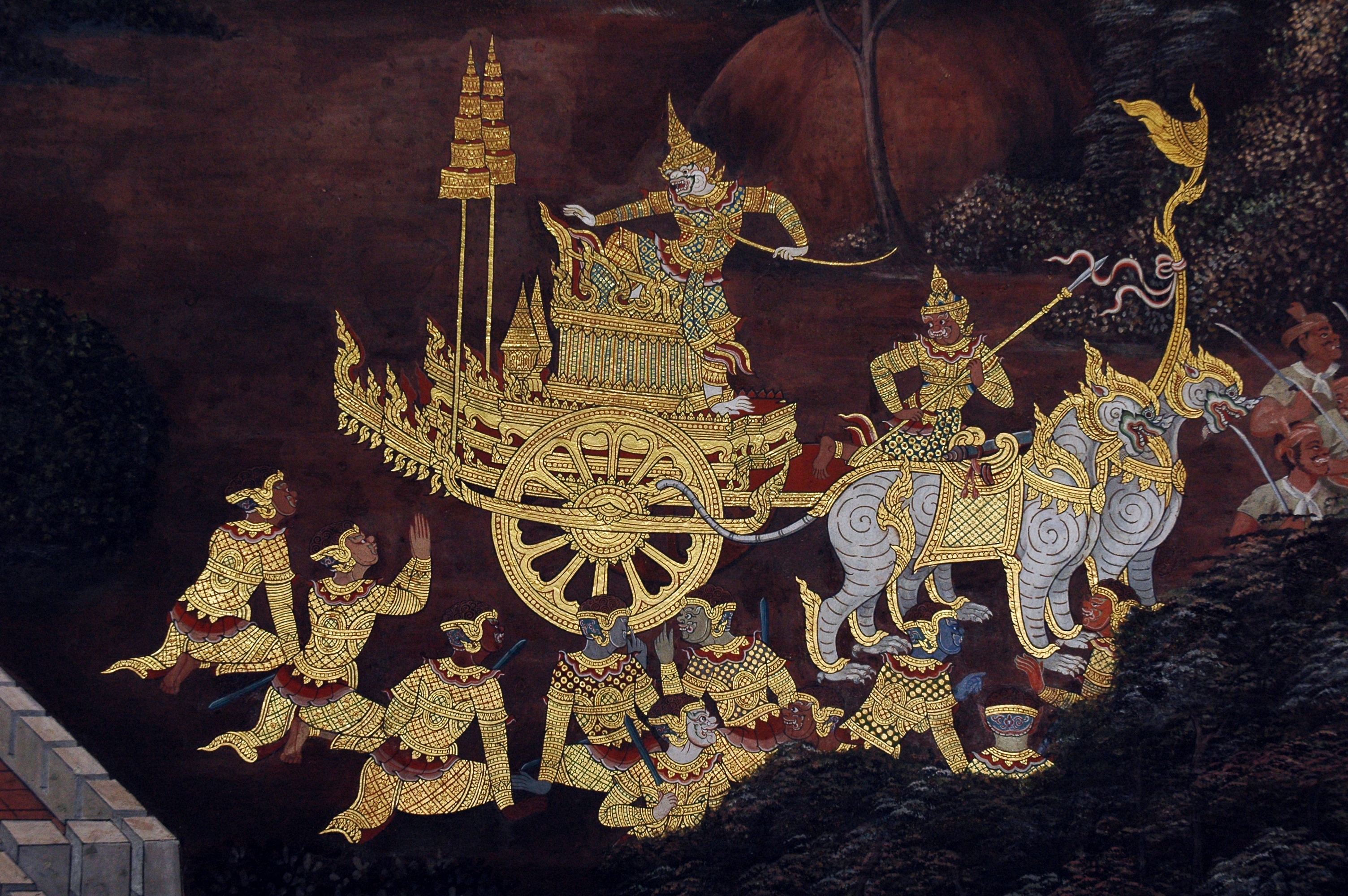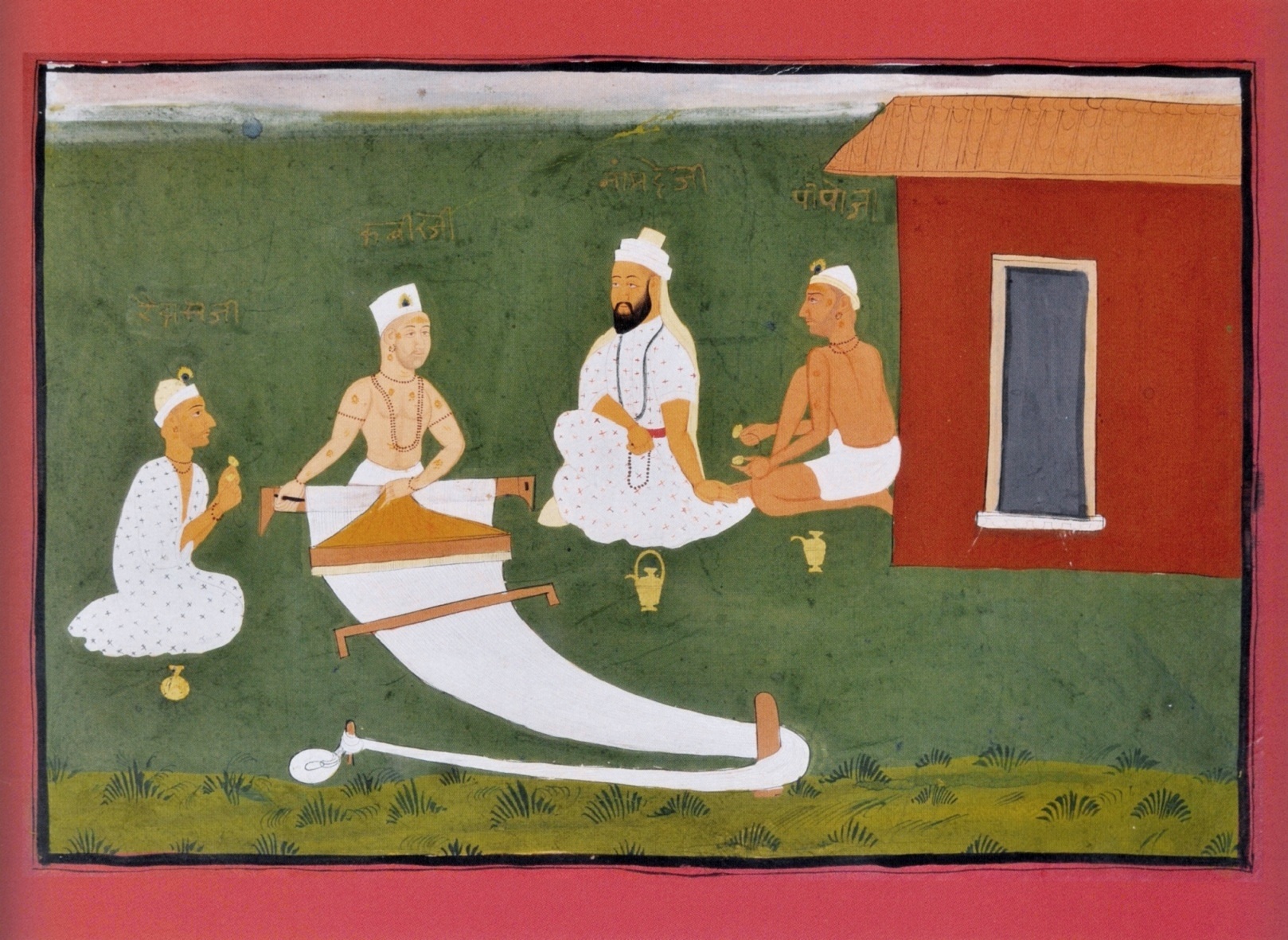It has been almost two weeks that the Supreme Court of India pronounced its verdict on the Ayodhya Title suit. In the 1045-page judgement, the court stated “The faith of the Hindus that Lord Ram was born at the demolished structure is undisputed….”, and in accordance with this observance, handed over the 2.77 acre of land where the Babri Masjid once stood to Ram Lalla. To be clear, Ram Lalla is the divine, infantile incarnation of the Hindu deity Ram. It is perhaps a fortuitous exercise to tell readers of this great country about Ram, but it is perhaps also imperative to do so – in a nation state riddled with so many contradictions, what cathartic consequences will another usher in, seeded in some workaday prose?

Painted cloth depicting a scene from the Ramayana. Wikimedia Commons
Unlike drinking water, or accessible healthcare, or a thriving economy, there is no dearth of diktats in India. Every day we get lessons on whom or what constitutes a Hindu or Hinduism, and what their sacrosanct duties embody. We meet a militant Ram, a Ram who seems more intent on retribution than benevolence. The predominantly Hindi speaking belt of northern India has been at the helm of this Ram-motivated Hindutva brigade; Ayodhya, believed to be the birthplace of Ram, is in Uttar Pradesh. The rich folk theatre form of the Ram Leela, which has been now largely co-opted by Hindutva forces as platforms for asserting religious bigotry, is an important tradition of this part of the country. Come to think of it, this wouldn’t have been possible without a man named Tulsidas – the 14th century Vaishnava saint-poet, who ushered Ram into everydayness by freeing him from the Sanskrit tomes of the Ramayana. His Ramcharitmanas, written in the Awadhi dialect, made Ram familiar to the masses that never had access to the Brahmanical echelons of Sanskrit. Tulsidas’s text is written in Chaupais or quatrain verses; one such chaupai begins with: "राम अतर्क्य बुद्धि मन बानी… (Ram atrkya buddhi mann vaani)" Roughly translated it means ‘Ram is beyond what the mind, heart or tongue can comprehend’. Unfortunately, that extra-sensory experience called Ram has now been ordained as landed gentry – not only has the apex court refuted Tulsidas's wisdom, but also quantified Ram through the conference of land rights. Supreme Court - 1, Tulsidas - 0.

Illustration from the Ramcharitmanas of Tulsidas (1532–1623) Jodhpur, c. 1775; 62.7 x 134.5 cm Mehrangarh Museum Trust. Wikimedia Commons
But the fabric of Southeastasian, especially Indian, mythologies is deeply enmeshed with myriad weaves, a heterotopic confluence of various narratives, cosmologies and belief systems. Needless to say, any attempt at homogenizing such diverse and complex systems of knowledge and philosophy is criminal; it is detrimental to co-habitation, and nearly decimates an already impoverished abstraction we have learnt to call secularism. Hence, there is no greater sacrilege than promoting and accepting Ram as the poster boy of militant Hindutva ideology and propaganda. A reversal of this myopic gaze is incumbent upon us, and it is not a difficult task. What one requires is the enterprise to ponder the wisdom of our ‘historical everyday’.
The Akhil Bharatiya Vidyarthi Parishad (ABVP) launched a tirade on the Department of History, Delhi University in 2008 for teaching an essay as part of their syllabus. Following the ensuing pogrom, a committee decision led the University to exclude the said essay from the syllabus in 2011. AK Ramanujan’s seminal treatise, titledThree Hundred Ramayanas: Five Examples and Three Thoughts on Translation, delineates the syncretic nature of the Ramayana narrative tradition. The essay enumerates the diversity and abundance of such narratives, prevalent not only in India, but also a large part of Southeast Asia. Versions and forms of the Ramayana can be found across Burma, Indonesia, Cambodia, Laos, Philippines, Sri Lanka, Nepal, Thailand, Malaysia, Japan, Mongolia, Vietnam and China.

How many Ramayanas? Three hundred? Three thousand? At the end of some Ramayanas, a question is sometimes asked. How many Ramayanas have there been? And there are stories to answer the question
'Three Hundred Ramayanas: Five Examples and Three Thoughts on Translation', AK Ramanujan
Ram has been the most coveted asset in the Monopoly board game our Hindutva nationalist compatriots have been playing since the better part of the last century. But attempts at appropriating Ram and binding him within the confines of rigid religious compartments is completely antithetical to the idea of Ram. In Jainism, Ram is described as one of sixty-three illustrious persons, known as Salakapurusa. Mappila Paattu or Mappila songs is a genre of folklore songs, composed in the colloquial Mappila dialect of Malayalam, interspersed with with Arabic, Persian, Hindustani and Tamil inflections. These songs of the Mappila Muslims of Malabar, Kerala, explore the themes of religion, love, satire, and heroism, and are often sung at occasions of birth, marriage, and death. One such ballad composed in the Mapilla tradition is the Mappila Ramayana, which narrates the story of Ram.

Scene from the Ramakien (Thai Ramayana) depicted on a mural at Wat Phra Kaew (Temple of the Emerald Buddha), Bangkok, Thailand Wikimedia Commons
When one goes out looking for Ram, it becomes impossible to miss him in the poetry and meditations of Kabir, the 15th-century Indian mystic poet and saint whose compositions and preaching challenged the orthodoxy and fundamentalism of organised Hindu and Muslim religious practices. There are competing stories about Kabir’s birth and upbringing, just like Lalon Fakir, the 18th century mystic poet from Bengal – contending parties claim they were born Hindus and raised as Muslims and vice versa. Kabir’s legacy is that of a tradition, a phenomenon which resonates beyond his immediate geography and chronology. Be it the folk singers of Malwa, Madhya Pradesh, the Muslim Mirasari folk singers of Rajasthan, or the qawwals across the borders in Pakistan – Kabir lives as an idea of religious emancipation. Kabir’s Ram is a celebration of human endeavour and will, a formless unbound realization of the supreme as a loved one – far dismissed from the idols consecrated in houses of worship. Kabir’s Ram resides in every soul, irrespective of caste, creed, gender and religion. “Sakal hans main Ram viraje, Ram bina koi dham nahi (In every swan-soul you find Ram, there is no reality without Ram)”, he sings. Yet his Ram doesn’t demand or require rituals, or syndicated worship, but exacts love and selfless submission – “Mala japu, na kar japu, aur mukh se kahu na Ram/ Ram hamara hume jape, hum payo visram Kabira (Neither do I count prayer beads, nor chant the name of Ram/ My Ram recites my name, and I find myself at ease Kabir)”.

Kabir with Namdeva, Raidas and Pipaji. Jaipur, early 19th century. National Museum, New Delhi. Wikimedia Commons
For now, it seems, the hurly burly to build Ram’s temple is done, but the battle to appropriate Ram is neither lost, nor won. In an increasingly polarizing India, it becomes imperative that organized, productive defiance foots the march towards a tolerant, compassionate future. More than 100 years ago, in the late 19th century in what is now central and northern Chhattisgarh, a group of Dalits (the Ramnami Samaj as they are known today) first tattooed their bodies and faces as an act of defiance and devotion. Denied entry to temples and forced to use separate wells, the Ramnamis wrote Ram's name on their bodies as a message to high-caste Hindus that god was everywhere, regardless of a person's caste or social standing.

A man belonging to the Ramnami Samaj. Observe's Facebook page. @Observefr
In 1910, the Ramnami Samaj won a court case after conflicts with several caste Hindu groups on the right to write the name of Ram on their clothing and on their bodies. They chant the name of Ram daily, and are exhorted to treat everybody with equality and respect.













